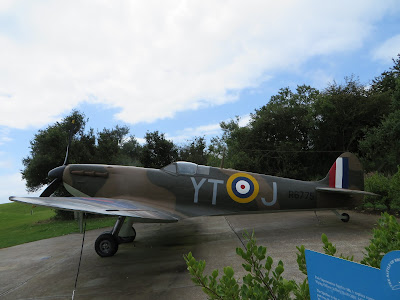
Time Zones:
QR 947. Dep Singapore 20:25. Arr Doha 23:30. (8h 5m)
16 Feb - Day 1 of tour
18th Feb - Day 3
Persepolis. One of the most spectacular sites of the ancient world, construction of the ceremonial city Persepolis began under Darius I in 516 BC and continued under Xerxes and successive Achaemenid kings until destroyed by Alexander the Great in 300-BC. Much superstructure and many standing columns survive. The sculpture is particularly impressive, especially the low reliefs depicting the 26 nationalities of the empire. Return to Shiraz mid-afternoon and visit the gardens around the tomb of Hafez, the Persian poet. Overnight Shiraz.
19th Feb - Day 4
Naqsh-i-Rustam, Pasargadae. The tombs of four Achaemenid kings were cut high up in the cliff at Naqsh-i-Rustam. Reliefs of Sassanian kings and their captive Roman emperors were added below 500 years later. On a remote plateau ringed by hills, Pasargadae was built by Cyrus the Great (d. 529 BC), the first of the Achaemenid emperors. His ziggurat-like tomb and remains of palaces survive. There follows a five-hour drive (with a refreshment break) through dramatic desert and mountain landscape before dropping down to the ancient caravan city of Yazd (total km today: 470). First of two nights here.
20th Feb - Day 5
Yazd. Yazd has one of the largest surviving Zoroastrian communities in Iran; two funerary ‘Towers of Silence’ rise on hillocks on the edge of the city, and there is a fire temple in the centre. Of the Islamic architecture, the 11th-cent. Cenotaph of the Twelve Imams is impressive (entry not guaranteed), while the Friday Mosque is spectacularly clad in 14th-cent. tile mosaics. See also an area of traditional vernacular architecture and the beautiful Dolat Abad Garden and pavilion. Overnight Yazd.
21 Feb - Day 6
Meybod, Mohammediye, Na’in. Another long drive (210km) through mountain-fringed desert, with three stops. In Meybod, visit the mud-brick citadel of Sassanian (5th century AD) origin, a caravanserai and a remarkable ice house. See traditional kilim-weaving at Mohammediye. In Na’in, the splendid early mosque, with imposing arcades and stucco reliefs, dates to the 10th & 11th centuries. Visit also the fascinating 16th-cent. governor’s house with its precious sgraffito decoration. Spend the first of three nights in Isfahan.
22 Feb - Day 7
Isfahan. Shah Abass I, the greatest of the Safavid kings, chose Isfahan as capital in 1598. He began the transformation of the city into one of the loveliest in the world. We begin with a pre-existing building, the vast Friday Mosque whose many parts incorporate most periods and styles. To the Zayandeh River, straddled by two beautiful 17th-cent. bridges, and cross to the Armenian Quarter. The cathedral interior is covered in high quality paintings of the 1660s, stylistically a fascinating western-Persian hybrid. The day finishes with a private concert of traditional Iranian music. Overnight Isfahan.
23 Feb - Day 8
Isfahan. The immense Meydan, Imam (formerly Royal) Square, is 500m long and formed of a two-storey arcade and the façades of three architectural masterpieces: the Ali Qapu Pavilion, a palace with loggia and well-preserved interiors; the Imam Mosque, magnificent in scale and detail; and the private Shaikh Lutfollah Mosque with a near perfect dome and unsurpassed tile work. Set in a garden a few minutes away the exquisite Chehel Sotun pleasure pavilion has very fine 17th-cent. figurative wall paintings.
24 Feb - Day 9
Natanz, Kashan. An early start for the last of the long drives (483km to Tehran). At Natanz, the cobalt blue and turquoise façade of the Friday Mosque is one of the most exquisite sights in Iran. Kashan has an outstanding Seljuk mosque and a number of large and richly embellished 19th-cent. courtyard mansions; we visit two, Tabatabiyeh House and Borujerdiyeh House. The Fin Garden is perhaps the most beautiful of classical Persian examples. First of three nights in Tehran.Espinas Hotel,126 Keshavarz Building, Tehran. Telephone: 021 83844.www.espinashotels.com
25 Feb - Day 10
Tehran. The Qajar period surges to a crescendo of enrichment at the Golestan Palace, which also houses fine carpets and other objets d’art. The archaeological section of the National Museum of Iran is of international importance and includes items from places visited on the tour. Displayed in vaults of the National Bank, the State Jewels Museum is an accumulation of gems and goldsmithery without rival. Return to the hotel mid-afternoon, or extend the day with another visit. Overnight Tehran.
26 Feb - Day 11
Tehran. The Carpet Museum displays major examples of historic Persian carpet art. Return to the National Museum, which also has one of the world’s greatest collections of Islamic arts, from the earliest period to the end of Qajar, all Persian. In the hills to the north, the Reza Abbasi Museum shows precious Persian miniature paintings. Final night Tehran.
27 Feb - Day 12
Free before flight.




















































